Hasidic Tales on God’s Presence in Our Lives -Lesson III
Sandy Kress
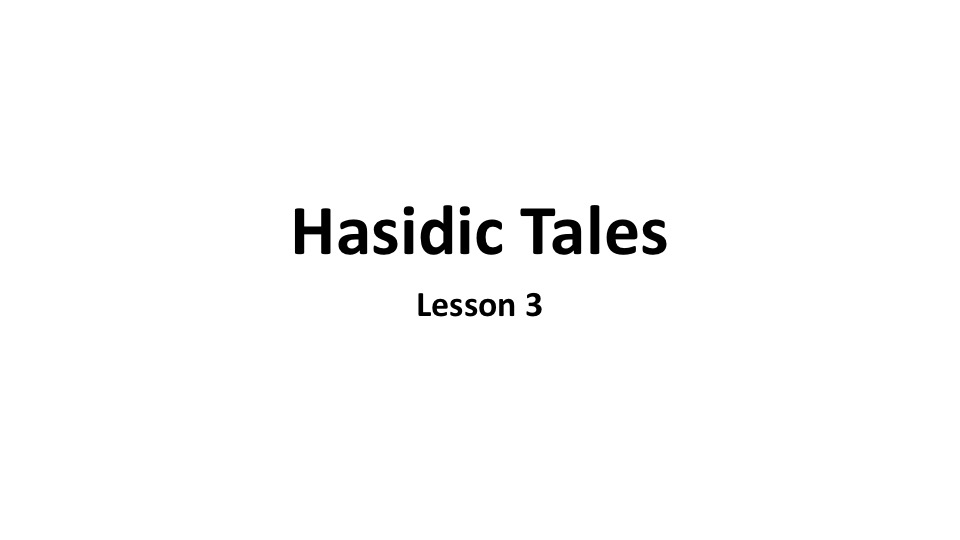
Hasidic Tales Lesson 3
I. Re-cap and Introduction
II.
Today’s Sayings
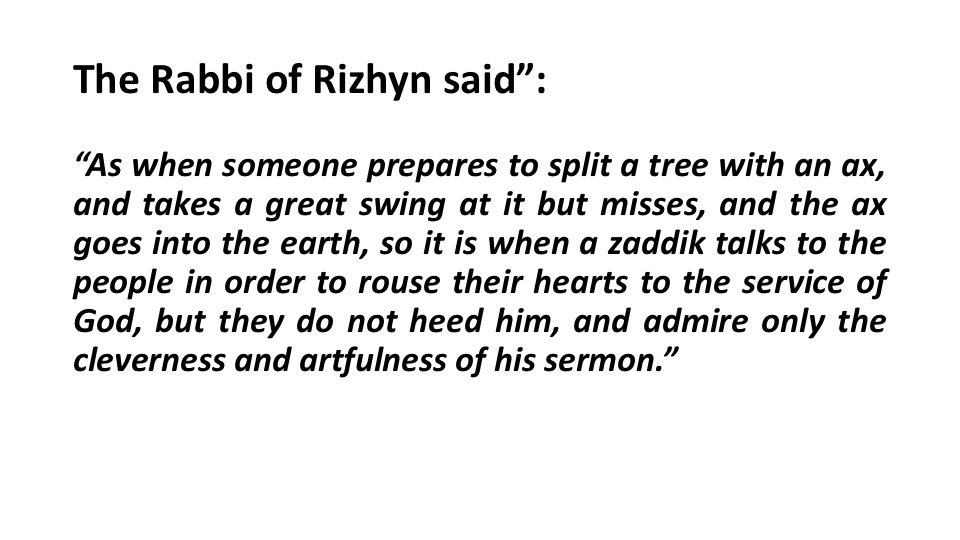
Hasidic Tales - 3
A. The rabbi of Rizhyn said: “As when someone prepares to split a tree with an ax, and takes a great swing at it but misses, and the ax goes into the earth, so it is when a zaddik talks to the people in order to rouse their hearts to the service of God, but they do not heed him, and admire only the cleverness and artfulness of his sermon.”
1. What’s the analogy here?
2. Do you have thoughts about what it means - religiously - to split a tree with an axe?
3. What should we look for in a sermon? In contrast, what do we get when the sermon is merely clever and artful?
4. Whose fault is it when the people do not heed the sermonizer? Explain various possibilities.
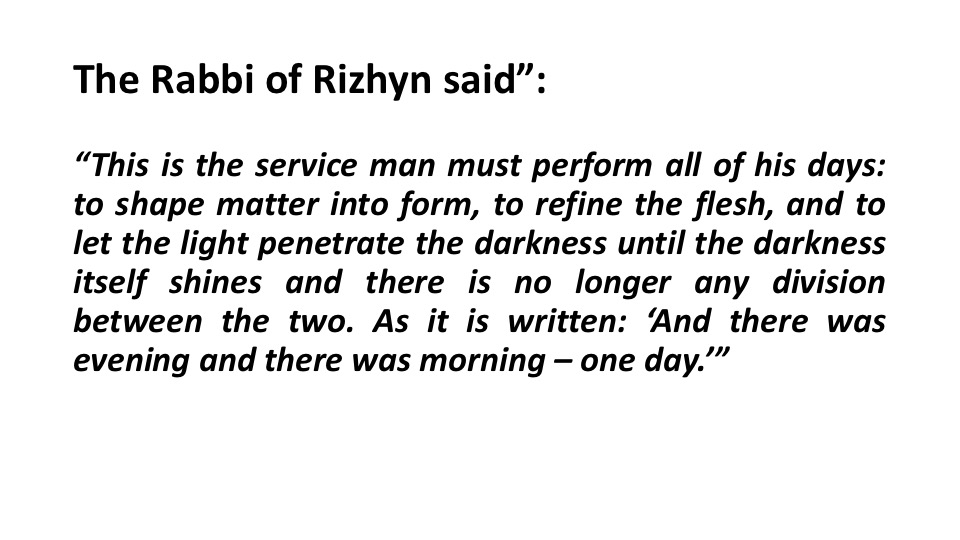
Hasidic Tales - 3
B. The rabbi of Rizhyn said:
“This is the service man must perform all of his days: to shape matter into form, to refine the flesh, and to let the light penetrate the darkness until the darkness itself shines and there is no longer any division between the two. As it is written: ‘And there was evening and there was morning – one day.’”
1. We’re to shape matter into form. What does that mean?
2. We can refine the flesh. What does that mean?
3. We can let the light penetrate the darkness until the darkness itself shines and there is no division between the two. What could this mean?
4. What does this service have to do with God - both as to God’s expectations of us and God’s presence with us?
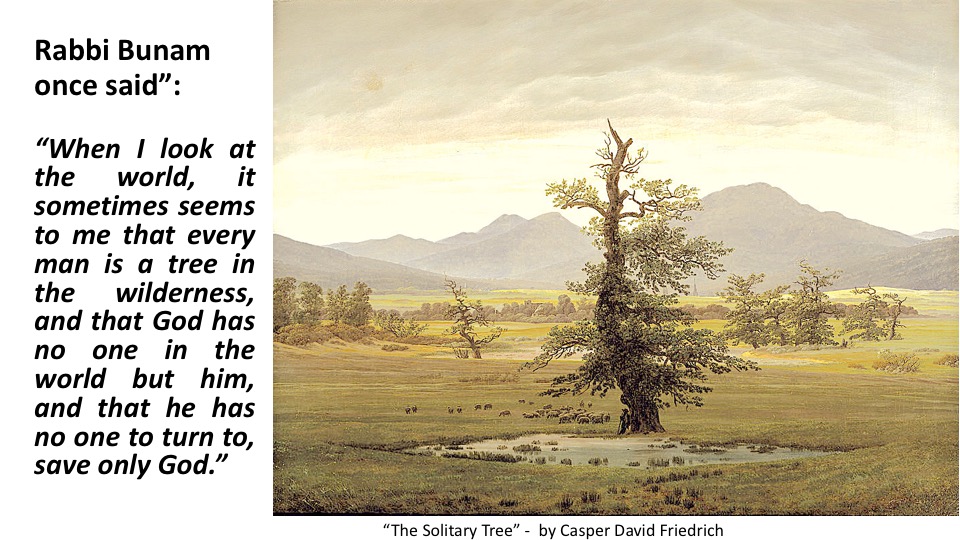
Hasidic Tales - 3
C. Rabbi Bunam once said:
“When I look at the world, it sometimes seems to me that every man is a tree in the wilderness, and that God has no one in the world but him, and that he has no one to turn to, save only God.”
1. When we look at a picture of a solitary tree on the landscape, we might ask a series of questions: How did this sole tree survive? Did someone make a choice to let it stand when taking down its “neighbors?” What does it say through its solitude and survival? And why do we take such a keen interest in looking at such images of single trees?
2. Do we see something of ourselves in the tree? Are we alone? Do we survive, too, separate and apart from a grove, damaged in some ways, but still standing? Do we see ourselves as serving a purpose in life, perhaps providing in some metaphorical way shade and shelter for others who may find benefit from a solitary tree? Have we been saved for such a task?
3. What do you think Rabbi Bunam is saying about God’s attitude toward the person who is like the solitary tree?
4. And how might the person who is like the solitary tree view his/her place and relationship with God?
5. Can you think of models in history who bear out the truths of this wisdom?
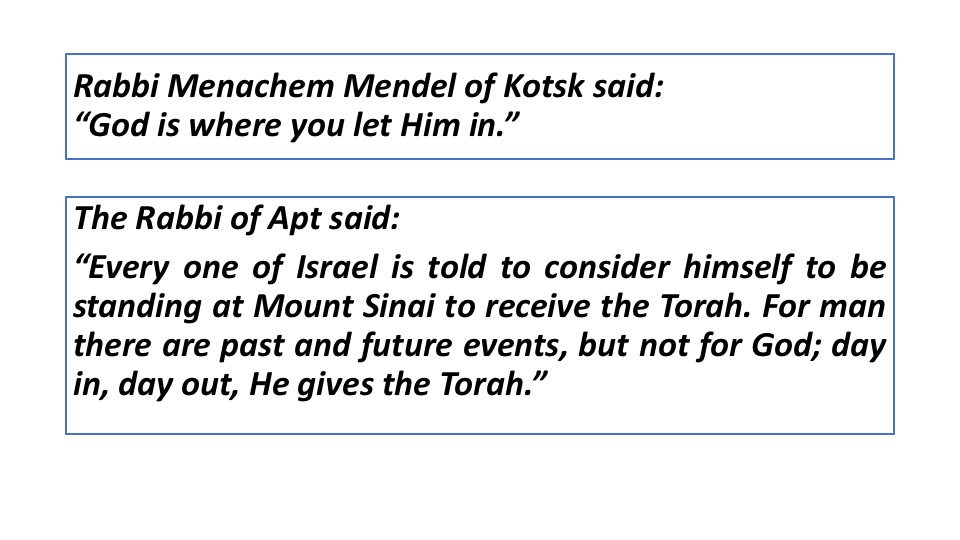
Hasidic Tales - 3
D. “God is where you let Him in.” Rabbi Menachem Mendel of Kotsk
The Rabbi of Apt said: “Every one of Israel is told to consider himself to be standing at Mount Sinai to receive the Torah. For man there are past and future events, but not for God; day in, day out, He gives the Torah.”
1. What does it mean, “God is where you let Him in?”
2. Read the words of the Rabbi of Apt more broadly. Our predecessors received the Bible. And some very long ago lived at times when the Revelation was experienced directly by them. We can see for them and us that there was a past, a present, and a future.
But, what meaning do we get from the wisdom that God’s truth and words, day in and day out, come fresh from the Lord?
3. What effect does all this wisdom have on how we live, and the decisions we make and the actions we take?
